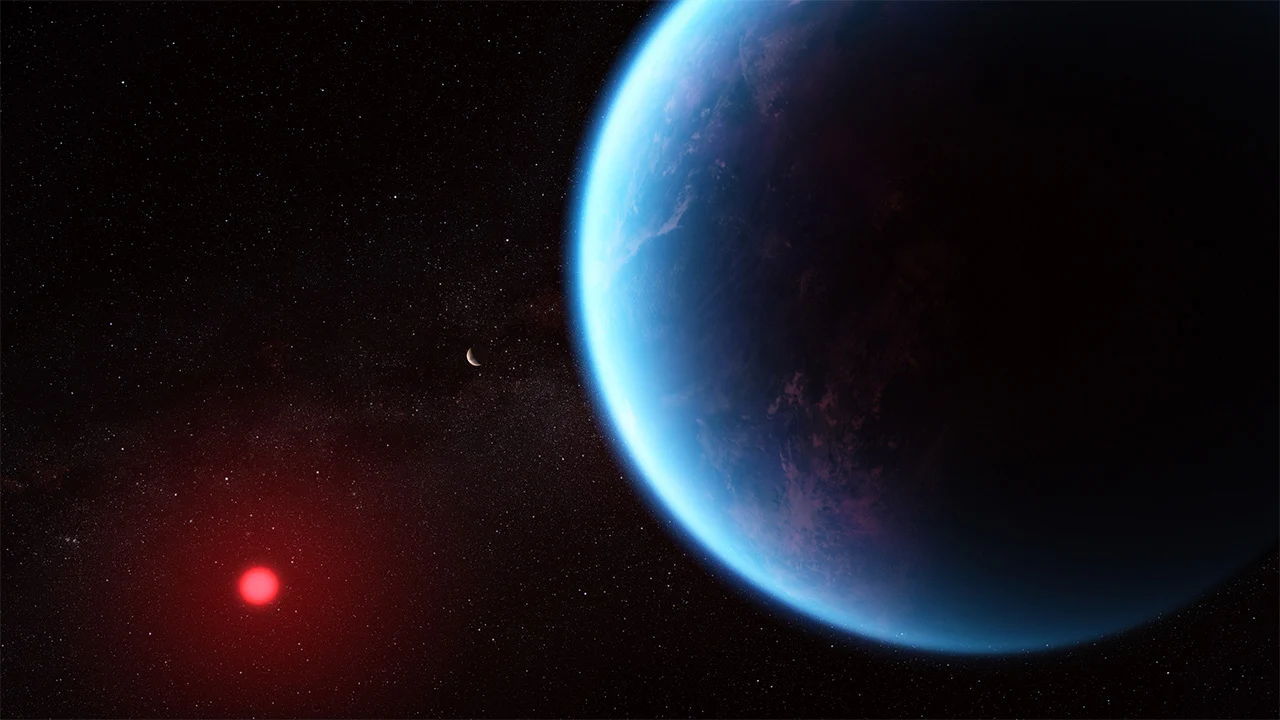Key Takeaways
1. K2-18b is an exoplanet located 120 light-years away in the habitable zone of a cool dwarf star and is 8.6 times heavier than Earth.
2. The planet may have water vapor and complex carbon-based molecules, including methane, carbon dioxide, and potentially dimethyl sulfide (DMS), which are essential for life.
3. K2-18b is classified as a Hycean planet, indicating it may have hydrogen-rich atmospheres and liquid water oceans beneath its surface.
4. The detection of DMS, a potential biosignature produced by marine microorganisms on Earth, suggests the possibility of life but requires further validation.
5. This discovery encourages scientists to explore a wider range of planets, not just Earth-like ones, in the search for extraterrestrial life.
First noticed back in 2015 by NASA’s K2 mission, K2-18b orbits a cool dwarf star that’s about 120 light-years away in the Leo constellation. This faraway planet, which is around 8.6 times heavier than Earth, is situated in the habitable zone, also known as the “Goldilocks zone.” This is the area around a star where conditions might just be right for liquid water to exist, similar to Earth. While early data from Hubble suggested there might be water vapor in the atmosphere, a group of astronomers and researchers from the University of Cambridge used Webb’s advanced tools to discover traces of methane (CH₄), carbon dioxide (CO₂), and potentially dimethyl sulfide (DMS). This indicates the presence of more complex carbon-based molecules, which are essential for life.
Exciting Possibilities of K2-18b
These findings imply that K2-18b could be classified as a Hycean planet, a type of exoplanet characterized by hydrogen-rich atmospheres and likely liquid water oceans underneath. This combination makes it a fascinating candidate in the quest for extraterrestrial life. K2-18b is larger than Earth, having about 2.6 times its radius, which suggests that its surface might be covered with high-pressure ice or a very thick ocean, possibly too hot for any known forms of life to survive. Nonetheless, the detection of life-friendly chemistry in its atmosphere represents a significant advancement.
The Significance of Dimethyl Sulfide
One of the most exciting findings is the potential detection of DMS. On Earth, this compound is mainly produced by microorganisms in the ocean, such as marine phytoplankton, making it a possible biosignature. Yet, scientists warn that this detection is still uncertain and requires more validation in future observations using the Webb telescope.
Lead researcher Nikku Madhusudhan mentions that this discovery encourages scientists to think about a wider variety of planets—not only Earth-like rocky ones—in their search for alien life. He noted, “Traditionally, the search for life on exoplanets has focused primarily on smaller rocky planets, but the larger Hycean worlds are significantly more conducive to atmospheric observations.” The research team is now gearing up for further observations with the James Webb Space Telescope’s Mid-Infrared Instrument (MIRI) to confirm the DMS signal and gain a deeper understanding of this intriguing exoplanet.
Source:
Link


Leave a Reply